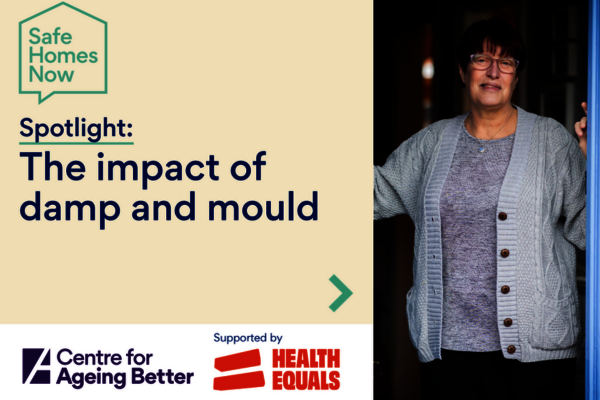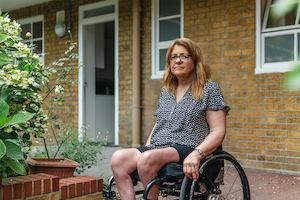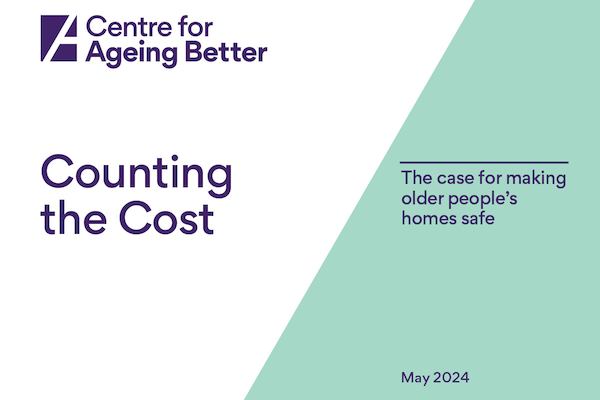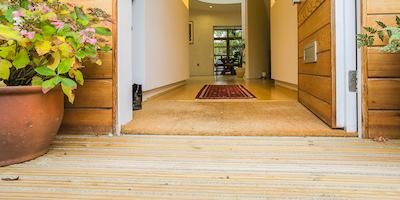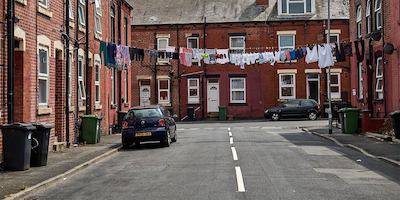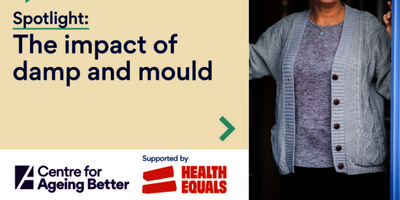Lessons from Greater Manchester: Supporting the development of age-friendly homes at a local level
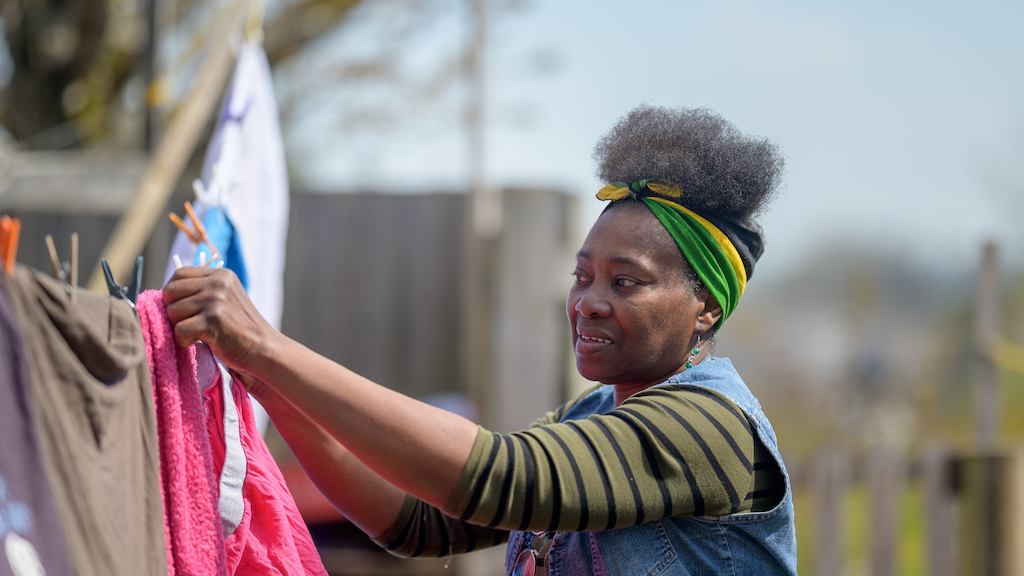
Since its inception in 2016, the Greater Manchester Ageing Hub has been responsible for delivering on Greater Manchester Combined Authority’s (GMCA) ambition to be an age-friendly city region
Here, Dr Mark Hammond, Senior Lecturer at Manchester School of Architecture, explains what has been achieved in six years of the region’s Housing, Planning and Ageing Group

Alongside trying to achieve success in improving cultural participation of older adults, supporting the older workforce, tackling digital inclusion, and improving public services, achieving the goal of improving housing for older people remains a challenging issue to tackle.
To address this, in 2018 the GM Ageing Hub, initially in partnership with the Centre for Ageing Better, convened the ‘Greater Manchester Housing Planning and Ageing’ group (GMHPA), an interdisciplinary, cross-sectoral working group aiming to improve the quality and quantity of age-friendly homes in Greater Manchester.
The group’s membership has changed over time, comprising of 10-15 members from organisations including GMCA, GM Health and Social Care Partnership, registered social landlords, and for-profit residential developers, architects, national charities and NGOs, academics, and representatives from the Greater Manchester Older People’s Network.
The group members participate as volunteers, receiving administrative support from the GM Ageing Hub.
Building the evidence base
In the early years of its formation, the GMHPA’s focus was on developing evidence to support an emerging narrative about how the city region could better support older people to live in homes that met their needs. This approach simultaneously recognised the requirement of putting in place programmes to support ageing and helping people have the right options to move home in later life.
The group’s members brought a diverse range of ideas and priorities to the table, meaning that the first phase of working together focused on agreeing a collective strategy for action.
During this time, the group helped to support research projects which addressed gaps in the knowledge or evidence base. These included the ‘Rightsizing’ and ‘Rightplace’ projects in partnership with the Centre for Ageing Better.
It also included the ‘Design for Life’ pocketbook which aimed to provide inspiration for designers and developers about what age-friendly cities could mean for them, and hosting several roundtable discussions with industry stakeholders in the social, mainstream and specialist housing sectors.
Articulating the ambition for Greater Manchester’s age-friendly homes
In 2021, the GMHPA brought all these initiatives together to publish ‘Framework for Creating Age-Friendly Homes in Greater Manchester’, a three-year work plan which presents five main priorities for delivering on the goals of the Greater Manchester Age-friendly Strategy.
This included themes around embedding ageing in mainstream housing strategies, supporting on-the-ground initiatives to create age-inclusive homes, and promoting greater advice to older people. Moving its focus more squarely on to engaging those developing and designing new homes to start to bring about a real shift in how things were done.
Being involved in the GMHPA has been hugely beneficial at both a personal and business level. It has enabled an understanding of the pro-active GM ecosystem and enabled the bringing together of the public, private, and voluntary sectors to cooperate and enable growth in the quality and quantity of homes and places for people in later life across the region.
Carrots and sticks
One of the key challenges faced by the group was the lack of central government policy or strategy around housing for older people, and thus the lack of legislative force to support the group’s aims.
While the GMHPA has actively contributed to housing strategies and strategic regeneration frameworks, there was a recognition that further focus needed to be put on winning over those in the development industry; recognising the ability of local government to dangle the carrot, not just use the stick.
For the GMHPA this meant making the ethical and financial case to industry stakeholders about ageing, challenging the ageism which still exists in many sectors, and providing support for those who want to make their developments more age friendly.
Developing a model for good practice in housing development
While the GMHPA had begun to win over several developers, a common issue they had raised was the lack of clear guidance on how they could embed age-friendly principles into their practices and those of the design teams they commission. This was deceptively tricky to respond to – the central premise of the GMHPA being that age-friendly environments need to recognise the diversity of older people, and that no simple ‘one-size-fits-all’ solution exists.
Despite this, the GMHPA came together to produce ‘Creating Age-Friendly Developments’, a guide for developers, designers and policymakers setting out 62 considerations for ensuring new residential developments and urban regeneration initiatives can better serve the needs and aspirations of older people. The guide covered three core themes – celebrating and including older people in the development process, planning age-friendly neighbourhood environments, and designing homes that promote ageing well.
The guide was initially envisaged as a checklist, but it was felt this could be a barrier to engagement if people felt unable to achieve everything on the list.
Instead, it was reframed as a series of considerations, providing the scaffolding for developers and designers to develop their own creative solutions in response to the contexts in which they work. Feedback on this approach has been positive – Shannon Conway, co-founder of residential developer ‘Picture This’ has been using the guide on a new 250-apartment age-inclusive development in Stockport. She notes:
It’s been really useful for us to be able to hand the guide to our project team – so the consultation team, our planners, our architects, our landscape architects. When we have a design meeting they refer back to the guide all the time!
The document was launched at an event in Greater Manchester with 70 developers in attendance, the vast majority of whom were from mainstream rather than specialist ageing-focused developers.
The launch included a speech from the GMCA Director of Place and the head of the GM Housing Investment Fund, who reiterated the importance of the ageing agenda to the Greater Manchester city-region, and able to make it clear to this audience that he was looking to support projects which addressed these considerations.
Policy is as much about timing, so I don’t think we can underestimate the seed sowing that was done, the relationships that were built.
Looking forward: keeping ageing on the housing agenda
After six years, including presenting to over 850 people at practitioner-focused events and working with multiple stakeholders to create useable guidance, the GMHPA is seeing a significant increase in interest in age-friendly approaches to housing. Their work remains part of the GM Ageing Hub’s long-term mission of driving a cultural shift in ageing within both policy and practice and is aiming to exponentially grow the number of ‘allies’ it has in spaces where older people need to be advocated for.
The group’s next steps are to focus on supporting work on-the-ground. The recent adoption of the ‘Places for Everyone’ development framework in Greater Manchester has kickstarted a drive for new local plans to be developed across the city-region, presenting an important opportunity to embed the ideas of the GMHPA into concrete planning documents.
The new government’s promise of new planning powers for combined authorities, the recruitment of additional planning officers, and the restoration of mandatory housing targets, may also offer greater opportunity for the group’s recommendations to be adopted.
The GMHPA has an open-door policy for their bi-monthly meeting and continues to actively encourage developers to table their ‘work in progress’ plans for feedback and discussion, acting as critical friends to aid their development process.
The group also plan to continue engaging with design professionals, both those in practice and those still in education, as well as wider stakeholders like elected members to continue the unending mission to win people over the cause.
Fundamentally, GMHPA seeks to shine a light on the ‘blind spot’ for ageing that exists within some parts of the housing sector, and to find ways of resonating with the contemporary (and often changing) contexts in which people practice.
The long-term nature of the GM Ageing Hub’s mission, supported by political leadership, experienced policymakers and a strong network of cross-sectoral collaborator, offers a unique means of addressing these challenges in lieu of a national framework or funding drive.
Safe Homes Now
Find out more
